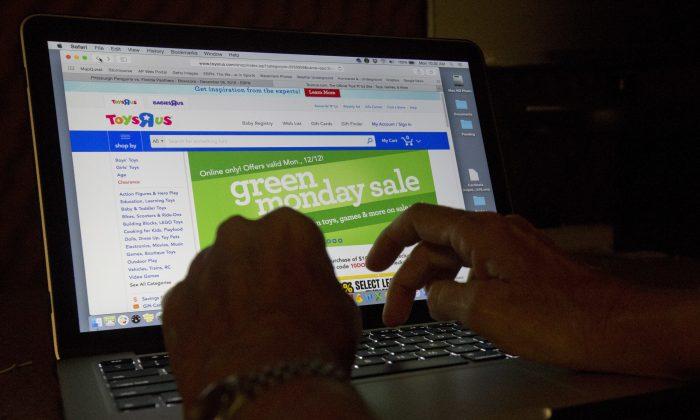Online consumer spending in the United States during the holiday shopping season from Nov. 1 through Dec. 31 was weaker than expected according to Jan. 12 data from Adobe Analytics.
Adobe covered more than one trillion visits to U.S. retail websites in its analysis.Continuing pandemic-related issues such as the supply chain crisis, rising inflation, a labor crisis, and government vaccine mandates have caused global product shortages and delayed deliveries.
The shortages have reduced global and U.S. holiday inventory by 2 percent, according to data from Salesforce.Though American consumers spent a record $204.5 billion online over the 2021 holiday season, an increase of 8.6 percent from a year earlier, the figure was lower than the $207 billion predicted by Adobe.
In late October, Adobe had optimistically predicted sales growth of 5 to 15 percent.The numbers marked the smallest rise in holiday online consumer activity since the software company started tracking holiday spending data in 2014.
Cyber Week, the five days between Thanksgiving and Cyber Monday, was also a disappointment for online retailers, with consumer spending dropping 1.4 percent.
“This holiday shopping season was the first time where big promotional moments like Cyber Monday and Black Friday took on less of the spotlight,” Taylor Schreiner, senior director of Adobe Digital Insights, told Forbes.
“Like we saw during the COVID-19 pandemic, e-commerce has become a ubiquitous daily activity and a flexible way for shoppers to navigate product availability and higher prices,” he said.Prices were slightly higher by 3 percent from a year ago, but in inflation-adjusted terms, was closer to 5 percent, said Schreiner.
American consumers saw over 6 billion out-of-stock messages online, with the messages increasing by about 10 percent from a year earlier, 253 percent above pre-pandemic levels, according to Adobe.
Online prices rose 3.1 percent in December, according to the report, the 19th consecutive month of increases.
Holiday discounts have been less generous compared to recent years for items such as electronics, furniture, appliances, and sporting goods; while discounts rose for apparel and toys.
Adobe said that on average, discounts were down 8 percent from 21 percent in 2020.
Supply and pricing issues were offset by promotions that encouraged online and in-store consumers to shop and spend earlier in the holiday season, said Schriner.
Toys, video games, gift cards, and books saw the strongest growth in sales.
At least 23 percent of holiday shoppers made use of retailers’ curbside and in-store pickup options for online purchases, which jumped to 40 percent of online orders on Dec. 23.
According to Adobe, 43 percent of online orders came via smartphones, up from 40 percent a year earlier, while the use of buy now, pay later plans increased by double digits.
“Inflation online is showing no signs of easing, as durable consumer demand is being met with the same, persistent supply challenges that produced over six billion out-of-stock messages online this holiday season,” according to Brown.





